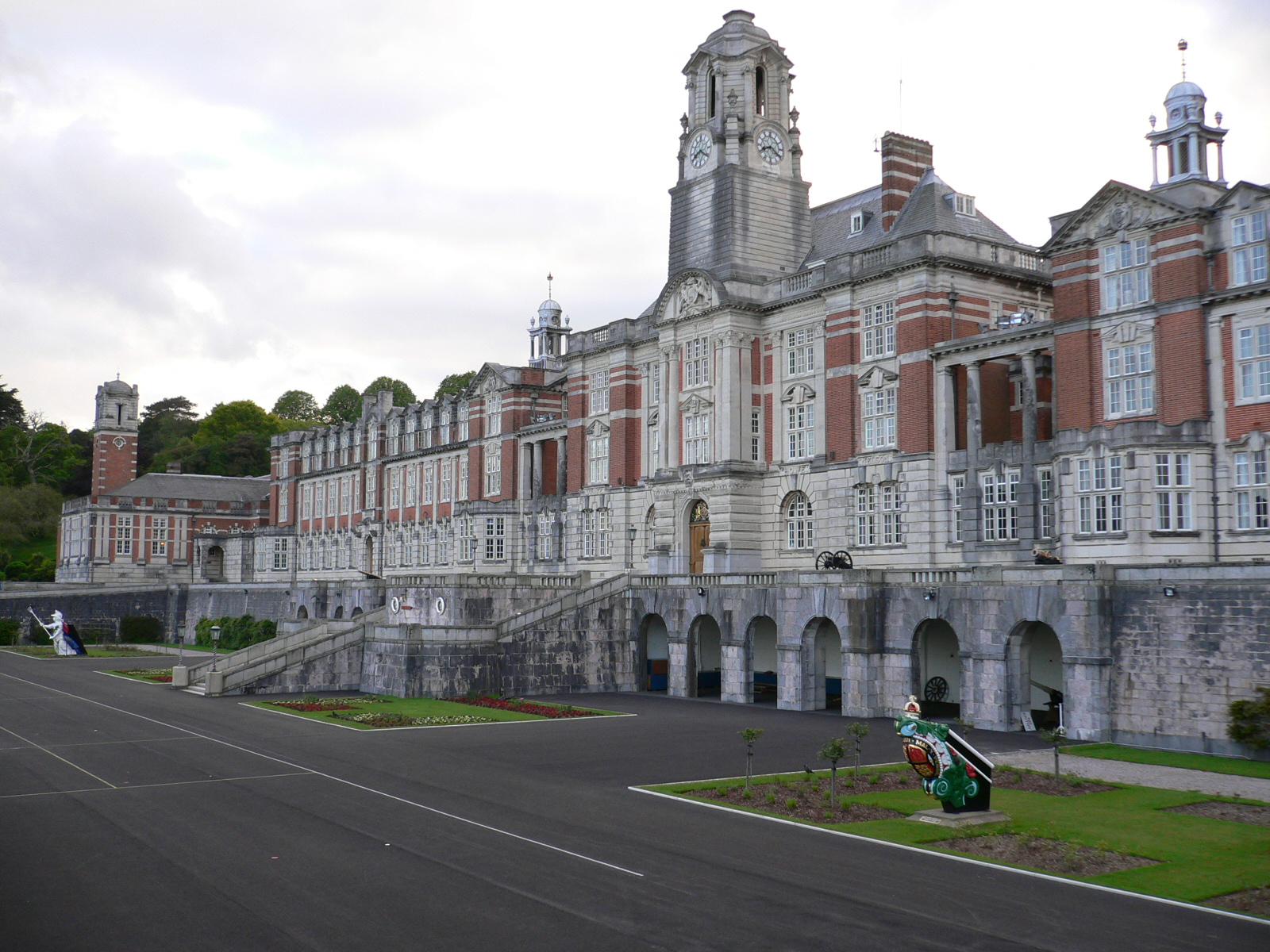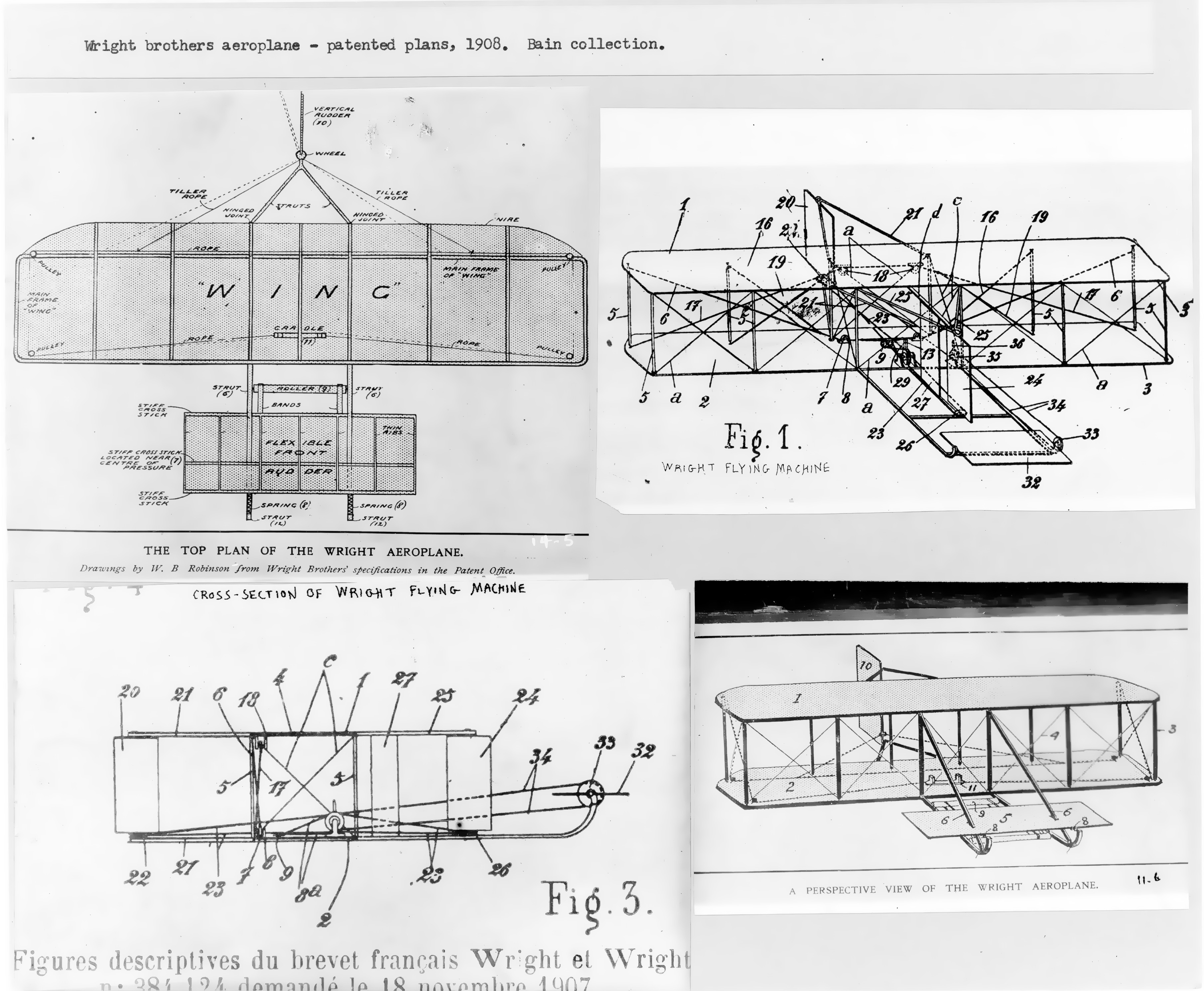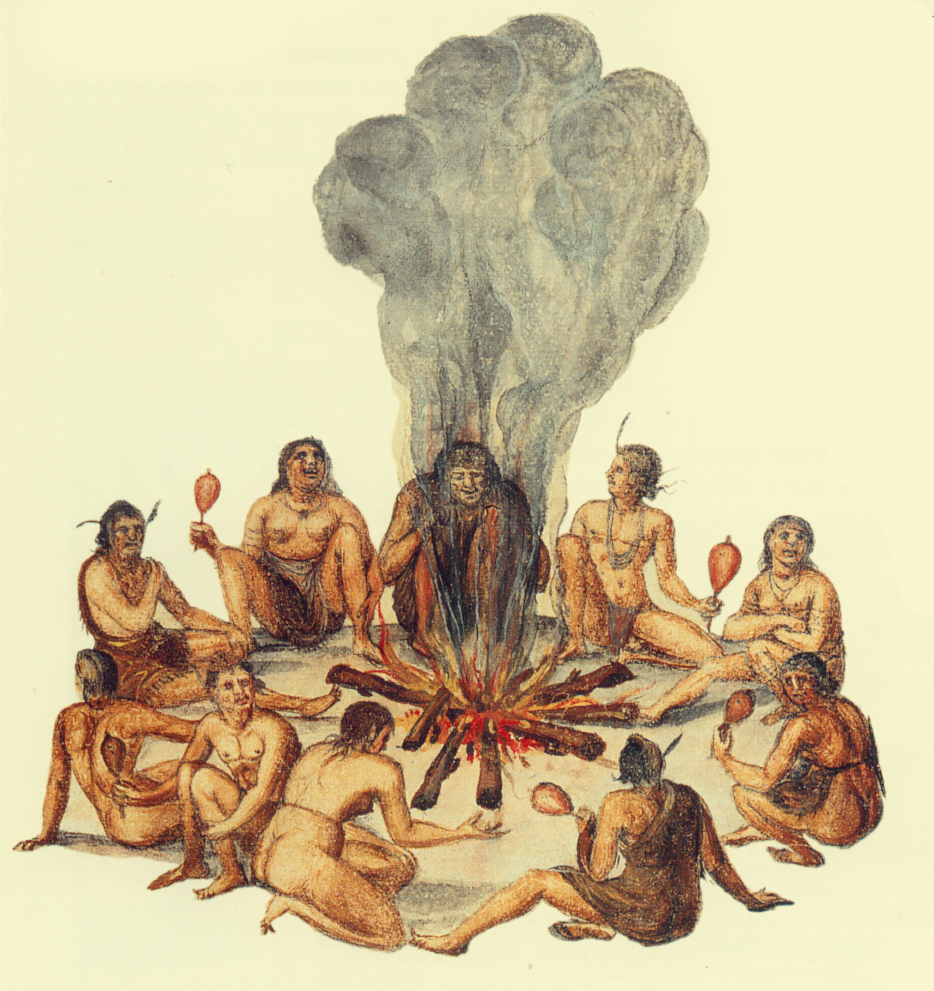|
Langley Aerodrome (aircraft)
The Langley Aerodrome is a pioneering but unsuccessful manned, tandem wing-configuration powered flying machine, designed at the close of the 19th century by Smithsonian Institution Secretary Samuel Langley. The U.S. Army paid $50,000 for the project in 1898 after Langley's successful flights with small-scale unmanned models two years earlier. Design and development Langley coined the name "Aerodrome" and applied it to a series of engine-driven unmanned and manned tandem wing aircraft that were built under his supervision by Smithsonian staff in the 1890s and early 1900s. The term is derived from Greek words meaning "air runner". After a series of unsuccessful tests beginning in 1894, Langley's unmanned steam-driven model "Number 5" made a successful 90-second flight of over at about at a height of on May 6, 1896. In November, model "Number 6" flew almost . Both aircraft were launched by catapult from a houseboat in the Potomac River near Quantico, Virginia, south of Washin ... [...More Info...] [...Related Items...] OR: [Wikipedia] [Google] [Baidu] |
Experimental Aircraft
An experimental aircraft is an aircraft intended for testing new aerospace technologies and design concepts. The term ''research aircraft'' or '' testbed aircraft'', by contrast, generally denotes aircraft modified to perform scientific studies, such as weather research or geophysical surveying, similar to a research vessel. The term "experimental aircraft" also has specific legal meaning in Australia, the United States and some other countries; usually used to refer to aircraft flown with an experimental certificate. In the United States, this also includes most homebuilt aircraft, many of which are based on conventional designs and hence are experimental only in name because of certain restrictions in operation. , US Federal Aviation Administration. Retrieved 2018-01-12 < ... [...More Info...] [...Related Items...] OR: [Wikipedia] [Google] [Baidu] |
Commissioned Officer
An officer is a person who holds a position of authority as a member of an armed force or uniformed service. Broadly speaking, "officer" means a commissioned officer, a non-commissioned officer (NCO), or a warrant officer. However, absent contextual qualification, the term typically refers only to a force's ''commissioned officers'', the more senior members who derive their authority from a commission from the head of state. Numbers The proportion of officers varies greatly. Commissioned officers typically make up between an eighth and a fifth of modern armed forces personnel. In 2013, officers were the senior 17% of the British armed forces, and the senior 13.7% of the French armed forces. In 2012, officers made up about 18% of the German armed forces, and about 17.2% of the United States armed forces. Historically armed forces have generally had much lower proportions of officers. During the First World War, fewer than 5% of British soldiers were officers (partly beca ... [...More Info...] [...Related Items...] OR: [Wikipedia] [Google] [Baidu] |
Science Museum (London)
The Science Museum is a major museum on Exhibition Road in South Kensington, London. It was founded in 1857 and is one of the city's major tourist attractions, attracting 3.3 million visitors annually in 2019. Like other publicly funded national museums in the United Kingdom, the Science Museum does not charge visitors for admission, although visitors are requested to make a donation if they are able. Temporary exhibitions may incur an admission fee. It is one of the five museums in the Science Museum Group. Founding and history The museum was founded in 1857 under Bennet Woodcroft from the collection of the Royal Society of Arts and surplus items from the Great Exhibition as part of the South Kensington Museum, together with what is now the Victoria and Albert Museum. It included a collection of machinery which became the ''Museum of Patents'' in 1858, and the ''Patent Office Museum'' in 1863. This collection contained many of the most famous exhibits of what is now th ... [...More Info...] [...Related Items...] OR: [Wikipedia] [Google] [Baidu] |
Wright Flyer
The ''Wright Flyer'' (also known as the ''Kitty Hawk'', ''Flyer'' I or the 1903 ''Flyer'') made the first sustained flight by a manned heavier-than-air powered and controlled aircraft on December 17, 1903. Invented and flown by brothers Wright brothers, Orville and Wilbur Wright, it marked the beginning of the Aviation in the pioneer era, pioneer era of aviation. The aircraft is a single-place biplane design with Dihedral (aeronautics)#Anhedral and polyhedral, anhedral (drooping) wings, front double Elevator (aeronautics), elevator (a canard (aeronautics), canard) and rear double rudder. It used a gasoline engine powering two pusher propellers. Employing "wing warping", it was relatively unstable and very difficult to fly. The Wright brothers flew it four times in a location now part of the town of Kill Devil Hills, North Carolina, Kill Devil Hills, about south of Kitty Hawk, North Carolina. The airplane flew on its fourth and final flight, but was damaged on landing, and ... [...More Info...] [...Related Items...] OR: [Wikipedia] [Google] [Baidu] |
Wilbur Wright
The Wright brothers, Orville Wright (August 19, 1871 – January 30, 1948) and Wilbur Wright (April 16, 1867 – May 30, 1912), were American aviation List of aviation pioneers, pioneers generally credited with inventing, building, and flying the world's first successful airplane. They made the first controlled, sustained flight of an engine-powered, Aircraft#Heavier-than-air – aerodynes, heavier-than-air aircraft with the ''Wright Flyer'' on December 17, 1903, four miles (6 km) south of Kitty Hawk, North Carolina, at what is now known as Kill Devil Hills, North Carolina, Kill Devil Hills. In 1904 the Wright brothers developed the ''Wright Flyer II'', which made longer-duration flights including the first circle, followed in 1905 by the first truly practical fixed-wing aircraft, the ''Wright Flyer III''. The brothers' breakthrough invention was their creation of a Flight dynamics (aircraft), three-axis control system, which enabled the pilot to steer the aircraft effec ... [...More Info...] [...Related Items...] OR: [Wikipedia] [Google] [Baidu] |
Orville Wright
The Wright brothers, Orville Wright (August 19, 1871 – January 30, 1948) and Wilbur Wright (April 16, 1867 – May 30, 1912), were American aviation pioneers generally credited with inventing, building, and flying the world's first successful airplane. They made the first controlled, sustained flight of an engine-powered, heavier-than-air aircraft with the ''Wright Flyer'' on December 17, 1903, four miles (6 km) south of Kitty Hawk, North Carolina, at what is now known as Kill Devil Hills. In 1904 the Wright brothers developed the '' Wright Flyer II'', which made longer-duration flights including the first circle, followed in 1905 by the first truly practical fixed-wing aircraft, the '' Wright Flyer III''. The brothers' breakthrough invention was their creation of a three-axis control system, which enabled the pilot to steer the aircraft effectively and to maintain its equilibrium. Their system of aircraft controls made fixed-wing powered flight possible and remain ... [...More Info...] [...Related Items...] OR: [Wikipedia] [Google] [Baidu] |
Heavier-than-air
The history of aviation spans over two millennia, from the earliest innovations like kites and attempts at tower jumping to supersonic and hypersonic flight in powered, heavier-than-air jet aircraft. Kite flying in China, dating back several hundred years BC, is considered the earliest example of man-made flight. In the 15th-century Leonardo da Vinci created several flying machine designs incorporating aeronautical concepts, but they were unworkable due to the limitations of contemporary knowledge. In the late 18th century, the Montgolfier brothers invented the hot-air balloon which soon led to manned flights. At almost the same time, the discovery of hydrogen gas led to the invention of the hydrogen balloon. Various theories in mechanics by physicists during the same period, such as fluid dynamics and Newton's laws of motion, led to the development of modern aerodynamics; most notably by Sir George Cayley. Balloons, both free-flying and tethered, began to be used for milit ... [...More Info...] [...Related Items...] OR: [Wikipedia] [Google] [Baidu] |
Glenn Curtiss
Glenn Hammond Curtiss (May 21, 1878 – July 23, 1930) was an American aviation and motorcycling pioneer, and a founder of the U.S. aircraft industry. He began his career as a bicycle racer and builder before moving on to motorcycles. As early as 1904, he began to manufacture engines for airships. In 1908, Curtiss joined the Aerial Experiment Association, a pioneering research group, founded by Alexander Graham Bell at Beinn Bhreagh, Nova Scotia, to build flying machines. Curtiss won a race at the world's first international air meet in France and made the first long-distance flight in the U.S. His contributions in designing and building aircraft led to the formation of the Curtiss Aeroplane and Motor Company, which later merged into the Curtiss-Wright Corporation. His company built aircraft for the U.S. Army and Navy, and, during the years leading up to World War I, his experiments with seaplanes led to advances in naval aviation. Curtiss civil and military aircraft were some ... [...More Info...] [...Related Items...] OR: [Wikipedia] [Google] [Baidu] |
North Carolina
North Carolina ( ) is a U.S. state, state in the Southeastern United States, Southeastern region of the United States. It is bordered by Virginia to the north, the Atlantic Ocean to the east, South Carolina to the south, Georgia (U.S. state), Georgia to the southwest, and Tennessee to the west. The state is the List of U.S. states and territories by area, 28th-largest and List of U.S. states and territories by population, 9th-most populous of the List of states and territories of the United States, United States. Along with South Carolina, it makes up the Carolinas region of the East Coast of the United States, East Coast. At the 2020 United States census, 2020 census, the state had a population of 10,439,388. Raleigh, North Carolina, Raleigh is the state's List of capitals in the United States, capital and Charlotte, North Carolina, Charlotte is its List of municipalities in North Carolina, most populous and one of the fastest growing cities in the United States. The Charl ... [...More Info...] [...Related Items...] OR: [Wikipedia] [Google] [Baidu] |
Kitty Hawk, North Carolina
Kitty Hawk is a town in Dare County, North Carolina, United States, located on Bodie Island within the state's Outer Banks. The population was 3,708 at the 2020 United States census. It was established in the early 18th century as Chickahawk. History The name Kitty Hawk is derived from the native Algonquian languages, Algonquin Native American language word Chickahawk, meaning "a place to hunt geese". Kitty Hawk became world-famous after the Wright brothers made the first controlled powered airplane flights at Kill Devil Hills, North Carolina, Kill Devil Hills, south of the town, on December 17, 1903. After the four flights in their ''Wright Flyer'', the brothers walked back to Kitty Hawk. Here, they sent a telegram from the Weather Bureau office to their father informing him of their success. Kitty Hawk is usually credited as the site of the powered flights because it was the nearest named settlement at the time of the flight; the modern town of Kill Devil Hills, North Carolina ... [...More Info...] [...Related Items...] OR: [Wikipedia] [Google] [Baidu] |
Wright Brothers
The Wright brothers, Orville Wright (August 19, 1871 – January 30, 1948) and Wilbur Wright (April 16, 1867 – May 30, 1912), were American aviation List of aviation pioneers, pioneers generally credited with inventing, building, and flying the world's first successful airplane. They made the first controlled, sustained flight of an engine-powered, Aircraft#Heavier-than-air – aerodynes, heavier-than-air aircraft with the ''Wright Flyer'' on December 17, 1903, four miles (6 km) south of Kitty Hawk, North Carolina, at what is now known as Kill Devil Hills, North Carolina, Kill Devil Hills. In 1904 the Wright brothers developed the ''Wright Flyer II'', which made longer-duration flights including the first circle, followed in 1905 by the first truly practical fixed-wing aircraft, the ''Wright Flyer III''. The brothers' breakthrough invention was their creation of a Flight dynamics (aircraft), three-axis control system, which enabled the pilot to steer the aircraft effec ... [...More Info...] [...Related Items...] OR: [Wikipedia] [Google] [Baidu] |






